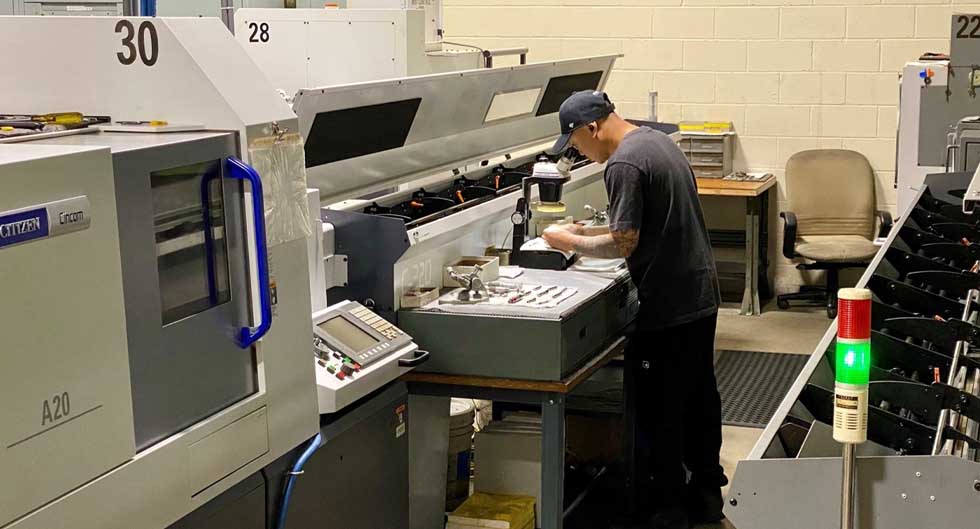Small, Round, & Intricate Is Our Thing
According to CEO Gary Holcomb, Compass’s acquiring Bergeron Machine one year ago added much more than just an eighth shop (Compass Precision Purchases Bergeron Machine (April 10, 2023)). With it came Swiss machining capabilities. To get a handle what this is, and what it means for all Compass customers, we chatted with Bergeron President Dave Giampa and learned the following:
What Exactly Is Swiss Machining
Swiss machining is a type of turning process that differs from what a traditional lathe does in a couple of important ways. Swiss machines have a guide bushing located between the chuck and the cutting tool. The bar stock is gripped by the chuck and pushed through the bushing to make contact with the tool. The presence of the guide bushing to support the material, plus the cutting tool’s location immediately in front of the bushing, creates a situation where precise geometries can be created with no material deflection.
What Else Is Unique About Swiss Machining?
On a conventional lathe, the work piece is stationary with respect to the Z-axis while the turning tool moves left and right along that axis. But the opposite is true with a Swiss-style lathe. With a Swiss machine, the turning tool is stationary and the material advances through the guide bushing in the Z direction as machining occurs.
Why Is This Called Swiss Machining?
The original version of this process was developed in Switzerland during the 1870’s as a way to make highly precise parts for watches. Hahaha… with the popularity of digital watches today, not sure how much it is used currently for watch parts. But Swiss machining is commonly employed in this country for making small intricate parts with a round orientation in one direction.
How Many Swiss Machines Does Bergeron Have?
Our shop is dedicated to Swiss machining, with 27 of our 30 machines being Swiss-style lathes (including the Citizen A20 model shown above being run by second shift foreman Bory Vuth). Many of them are quite new. Nine of our Swiss machines were purchased since 2017. The underlying technology is the same, but the equipment manufacturers keep finding ways to make these machines faster and more accurate. So we keep buying new machines to add capacity and increase productivity.
What Markets Need Parts Best Made Using Swiss Machining
Medical and electronics are probably the largest markets for Swiss machined parts. Bone screws are a classic example of the long and slender type of component best made with this technology.
Does Bergeron Make Bone Screws?
No, although we could. Bergeron Machine, like the rest of Compass, focuses on the “tough stuff”, meaning complicated parts made from difficult-to-work-with materials that 95% of other shops can’t do. Most of our components are machined from Inconel, Monel, titanium, or tool steel round bar.
What Markets Does Bergeron Serve?
Most of our customers are in the aerospace, defense, and semiconductor markets. The components we make for them are typically quite small, round along one axis, and include numerous flat and/or drilled surfaces. Pictures of some typical parts are shown on the capability page of Bergeron’s website.
Finally, What Would You Say To A Customer Needing A Swiss Machined Part?
Unless you are certain of it, don’t presuppose that Swiss-style machining is the best way to make the part you need. Instead, talk to companies like Compass whose multiple shops combined have virtually all machining processes in-house. And if Swiss machining is the way to go, make sure the vendor you choose is experienced with the material you need. Lots of Swiss shops focus on aluminum and other easy-to-machine materials, but not many concentrate on hard metals like Bergeron does.
For more information about Bergeron Machine and its Swiss machining capabilities, please contact Dave Giampa directly at [email protected]. For background on Compass Precision, contact Vice President of Sales Jim Miller at [email protected]

